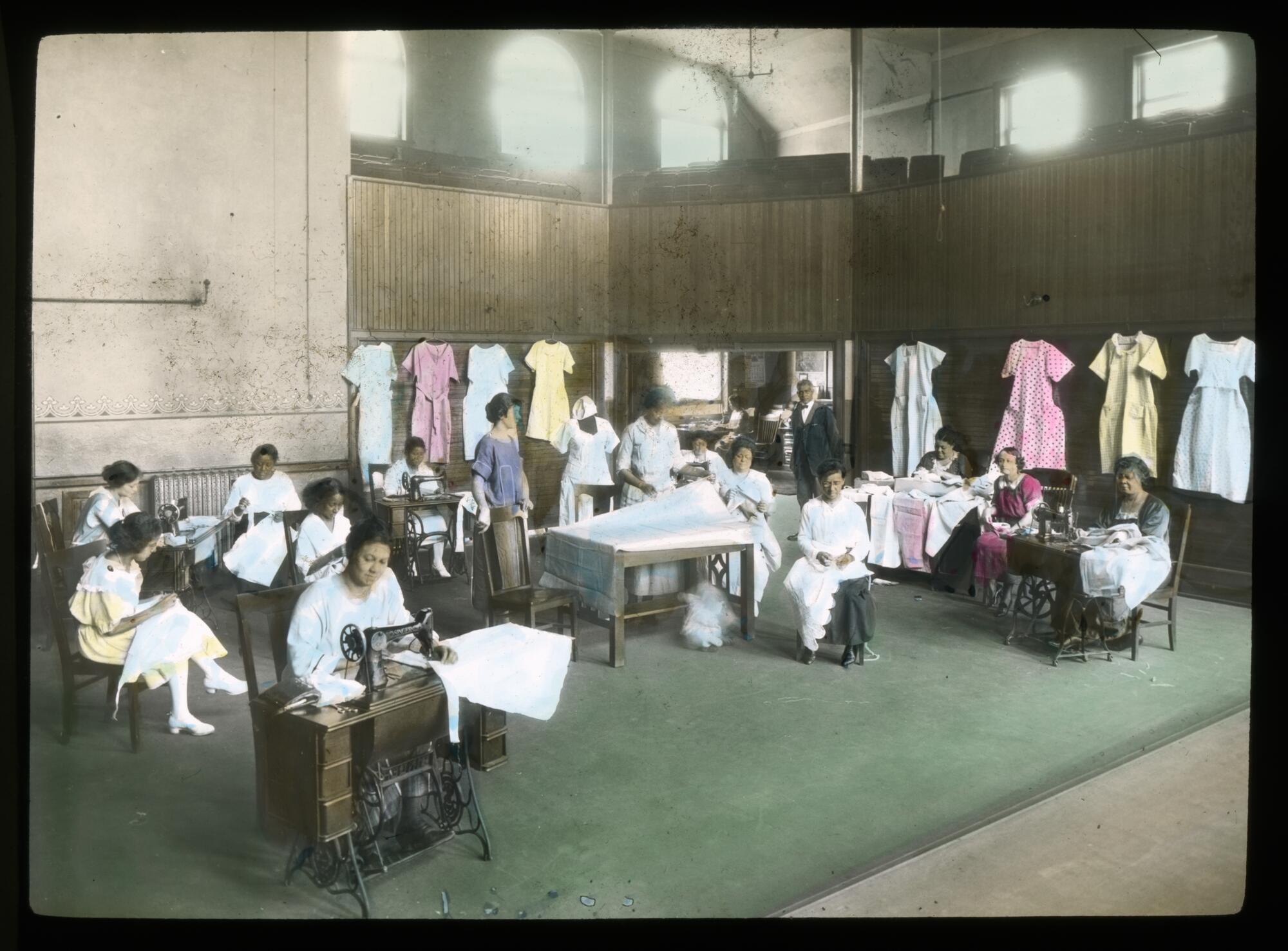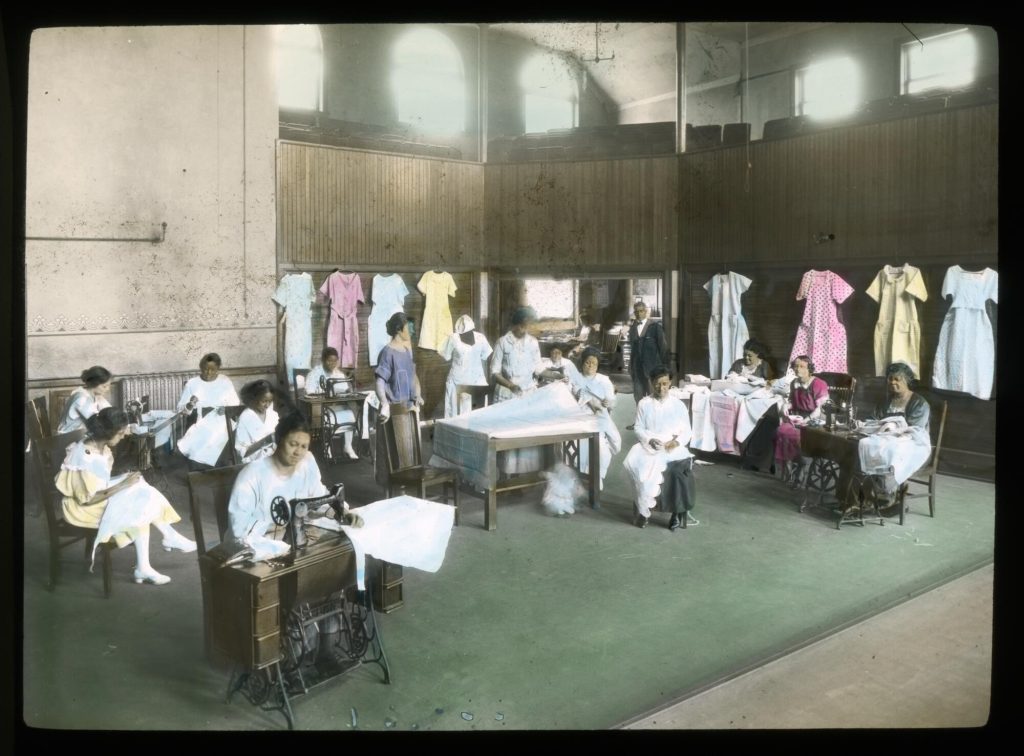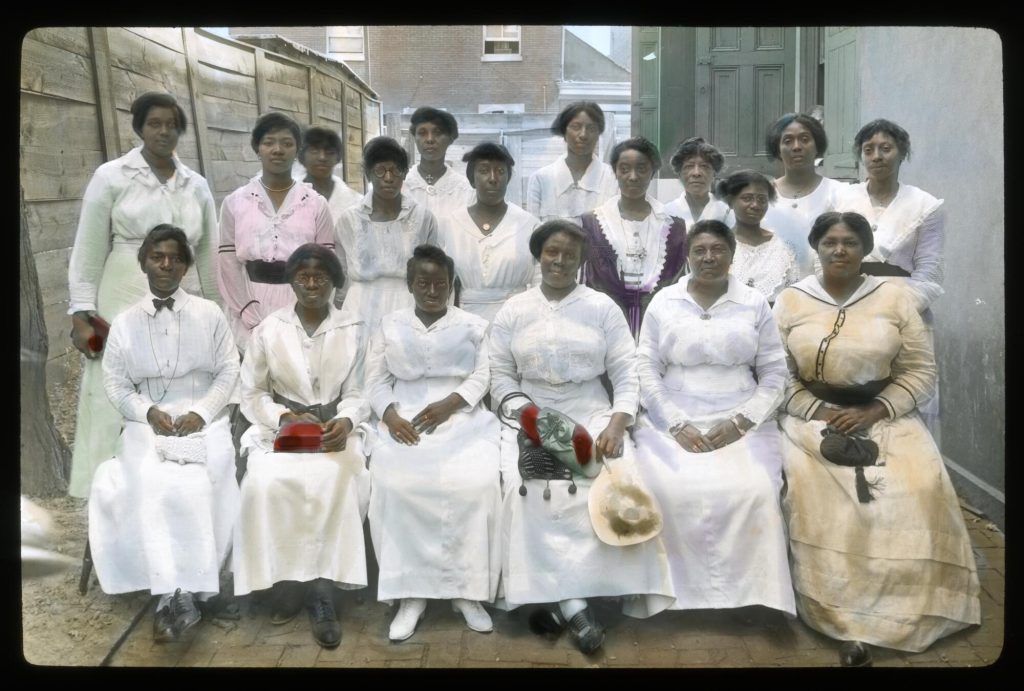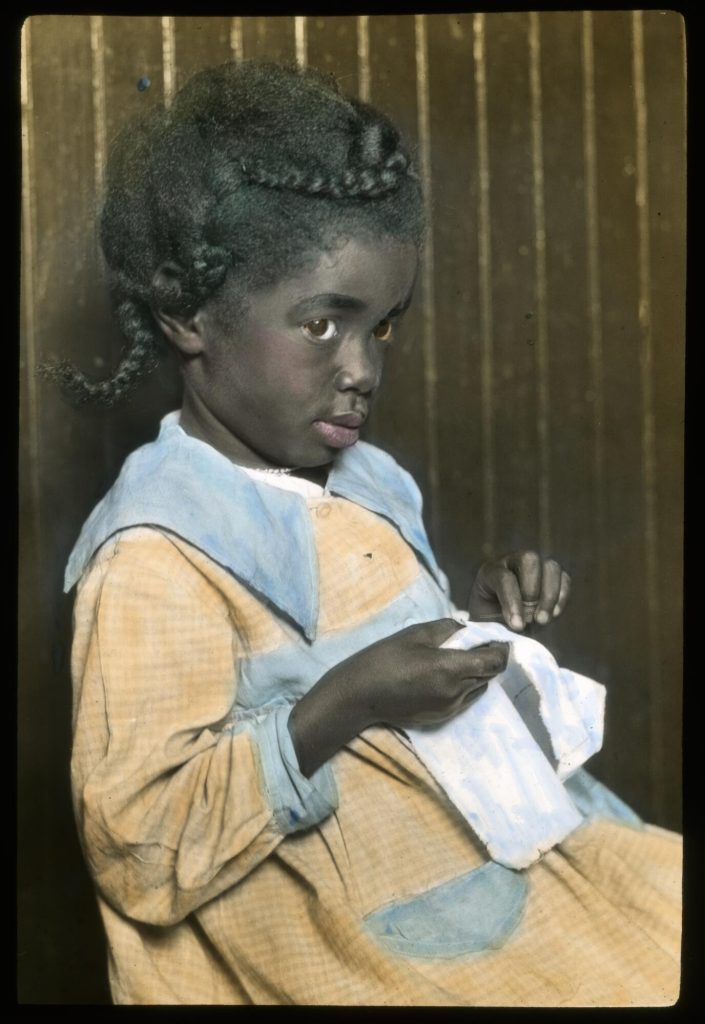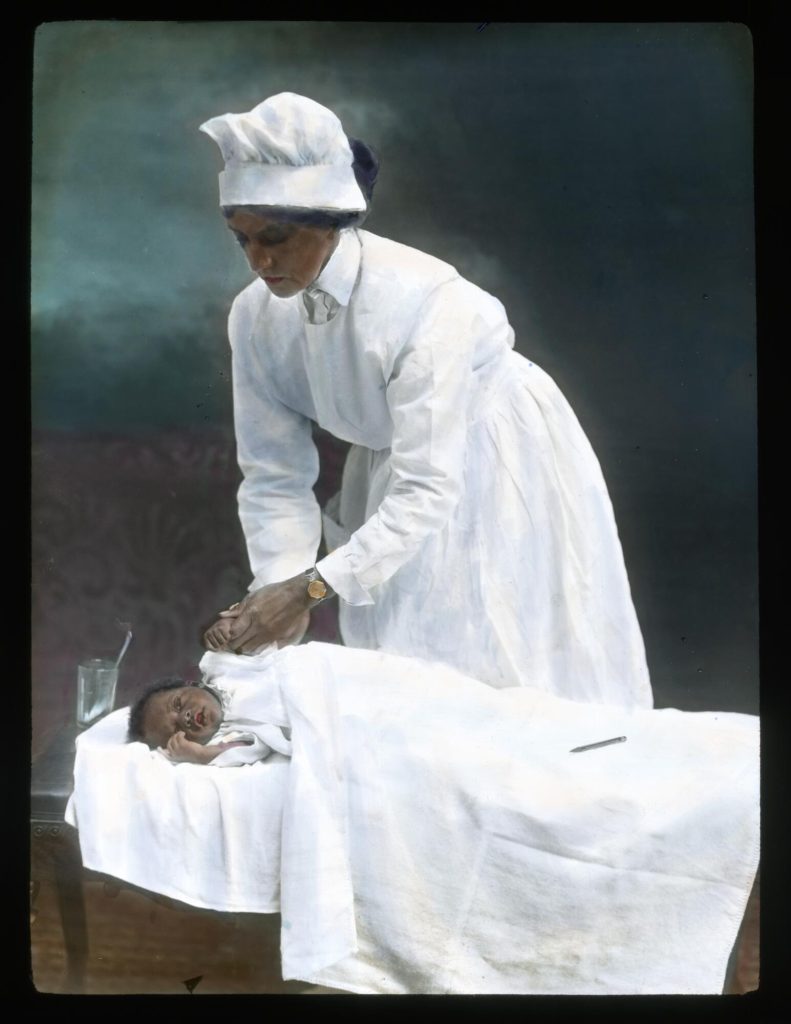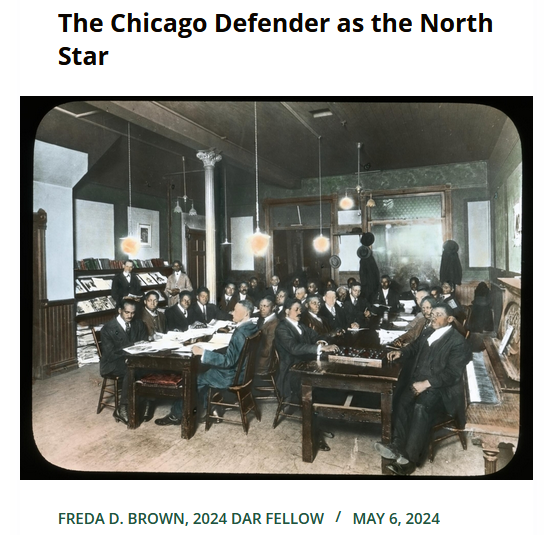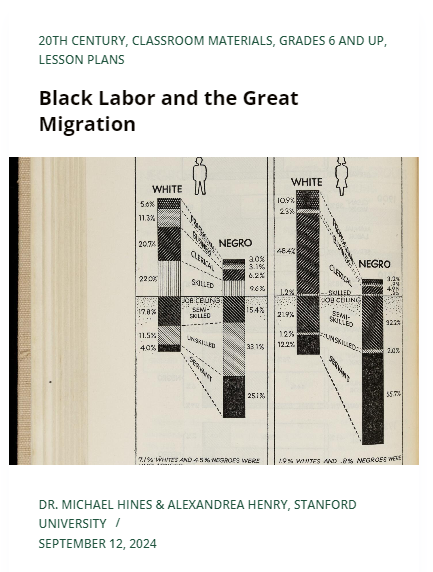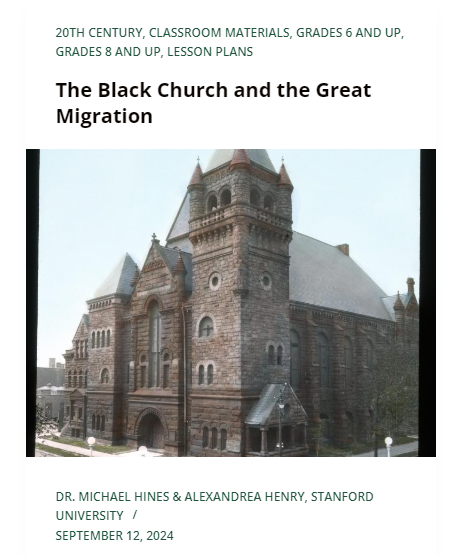This lesson is one of a series of classroom materials about the Great Migration, some generously funded by the Chicago Chapter, National Society Daughters of the American Revolution. Find the rest in the Related Resources tab!
This is the second of three lessons by Mrs. Freda D. Brown, School Library Media Specialist and Journalism Instructor at Kenwood Academy High School, on The Chicago Defender and the Great Migration.
Curriculum Connections: 20th Century, African American History, Great Migration, Jim Crow, Journalism, Race Relations, Racism, Women Journalists, Women’s Rights
Lesson Series Context and Framework
The Great Migration changed the makeup of many major American cities, but the intricacies of how this movement impacted everyday citizens are often under-explored.
Add to that the crucial role journalists played in helping African Americans navigate their migration North and their lives upon arrival, and there is much to explore. In particular, The Chicago Defender, under the leadership of its socially conscious founder Robert S. Abbott, exhibited extraordinary leadership during this movement, by encouraging the move North, publishing stories about career opportunities in Northern cities, and even employing Black women journalists on the Defender staff.
These lessons will explore the lives of the men, women, and children who lived in the South, but desired to move North in pursuit of a better future. In particular, they will emphasize the extraordinary challenges young girls and women experienced when migrating north, and their experiences once they arrived in northern cities.
These lessons will also emphasize the remarkable women journalists who reported for The Chicago Defender and the intersection of journalism and activism during the Great Migration, demonstrated by women like Ida B. Wells-Barnett and Ethel Payne. These women used their pens to highlight the realities of the struggles of everyday life in America during the Great Migration, and particularly the challenges and experiences African American women and young girls faced.
Lesson Series Learning Objectives:
- Students will examine the role the Chicago Defender newspaper played in encouraging African Americans to migrate North in search of economic opportunities.
- Students will evaluate the unique contributions of African American women journalists during the Great Migration.
Lesson Series Essential Questions:
- What would it take for you to leave everything you knew behind?
- How did two waves of Black migration impact the landscape of major US cities?
- What role did African American newspapers play before, during, and after the Great Migration?
- What major contributions to American culture can be attributed to the Great Migration?
- Why are there so few records of migration stories in the American archive?
- What role did the Great Migration play in shaping the American Dream story?
- What role did women play in the Great Migration?
This lesson was produced through a generous annual fellowship for digital education on American Women’s History or Early American History funded by the Chicago Chapter, National Society Daughters of the American Revolution, 2024.
Materials – Available for Download in the Downloads Tab:
- A copy of the “Women of the Great Migration, Part I: Letters from the South” lesson
- Letters to the Chicago Defender from women hoping to emigrate north
- Copies of lantern slide images
- Gallery Walk handout
- Exit Ticket handout
Lesson duration: 50 minutes
Essential Questions:
- What role did women play in the Great Migration?’
- What unique challenges did African American women face during the Great Migration? How did they combat these challenges?
Learning Objectives:
- Students will be able to explain the unique challenges faced by women during the Great Migration.
Process
Gallery Walk (15 minutes)
Students will view selected lantern slides (glass slides designed to project images) in a gallery walk around the classroom and record their observations about the women depicted in them.
The teacher will print four of the lantern slides and position them around the classroom, so that students can do a gallery walk to examine each image. View all the lantern slides here.
This set of lantern slides documents the daily life of African Americans during the early years of the Great Migration from the rural American South, as well as outreach activities conducted by the Methodist Episcopal Church (MEC) to assist them with finding work and social services. The first slides show scenes of Black sharecroppers picking cotton and processing sugar. Other slides show African Americans at work in northern cities. Learn more here.
Distribute copies of the Gallery Walk handout for students to record their observations as they walk.
Focus should be on the following:
- What types of activities are depicted in the image?
- How is the woman dressed? What does the way she is dressed tell you about her life? Her status?
- What do you think each woman’s triumphs and challenges have been? List at least one of each.
Whole class discussion of the letters to the Defender using the discussion questions below. (25 minutes)
Next, the teacher should distribute a letter to each student. Students will review their assigned letters written to the Defender, to Mr. Robert Abbott, requesting assistance with finding work after migrating North to Chicago.
Learn more about the letters here.
Discussion Questions:
- What does the content of these letters tell us about Abbott’s influence on the African American community nationwide? His influence in Chicago?
- What is the author’s tone in the letter?
- What types of work are the writers looking for in Chicago? What skills do they have? Support your response with evidence from the letter.
- Based upon the text of the letter, what level of education do you think the authors have? Support your response with evidence from the letter.
- Read your assigned letter and identify the specific requests the writer makes to Mr. Abbott. In what ways do the letters provide some context to the images in the lantern slides? Explain your response.
Wrap up (5 minutes)
Based upon viewing both the lantern slides and reading the letters from young women, students will complete an exit ticket (more about exit tickets here) where they summarize their what they learned about Black women’s experiences during The Great Migration based on this lesson.
About the Author
Freda D. Brown is the School Library Media Specialist and Journalism Instructor at Kenwood Academy High School in Chicago, IL. She received a Bachelor of Arts Degree in English Literature from Tennessee State University, a Master of Arts in Education from Roosevelt University, and a Master of Science in Library and Information Science from Dominican University. With 23 years of experience as an educator, Mrs. Brown specializes in connecting people with the resources they need to be successful, whether that is a book, database, or an individual. She lives in Chicago with her awesomely funny husband and her even funnier son.
This lesson supports the following Common Core learning standards:
Analyze and evaluate the effectiveness of the structure an author uses in his or her exposition or argument, including whether the structure makes points clear, convincing, and engaging.
Determine an author’s point of view or purpose in a text in which the rhetoric is particularly effective, analyzing how style and content contribute to the power, persuasiveness or beauty of the text.
Integrate and evaluate multiple sources of information presented in diverse formats and media (e.g., visually, quantitatively, as well as in words) in order to address a question or solve a problem.
Integration of Knowledge and Ideas: Integrate and evaluate content presented in diverse formats and media, including visually and quantitatively, as well as in words.
Determine two or more central ideas of a text and analyze their development over the course of the text, including how they interact and build on one another to provide a complex analysis; provide an objective summary of the text.
Analyze a complex set of ideas or sequence of events and explain how specific individuals, ideas, or events interact and develop over the course of the text.
Download the following materials below:
- A copy of the lesson “Women of the Great Migration, Part I: Letters from the South”
- Letters to the Chicago Defender from women hoping to emigrate North
- Copies of lantern slide images
- Gallery Walk handout
- Exit Ticket handout



